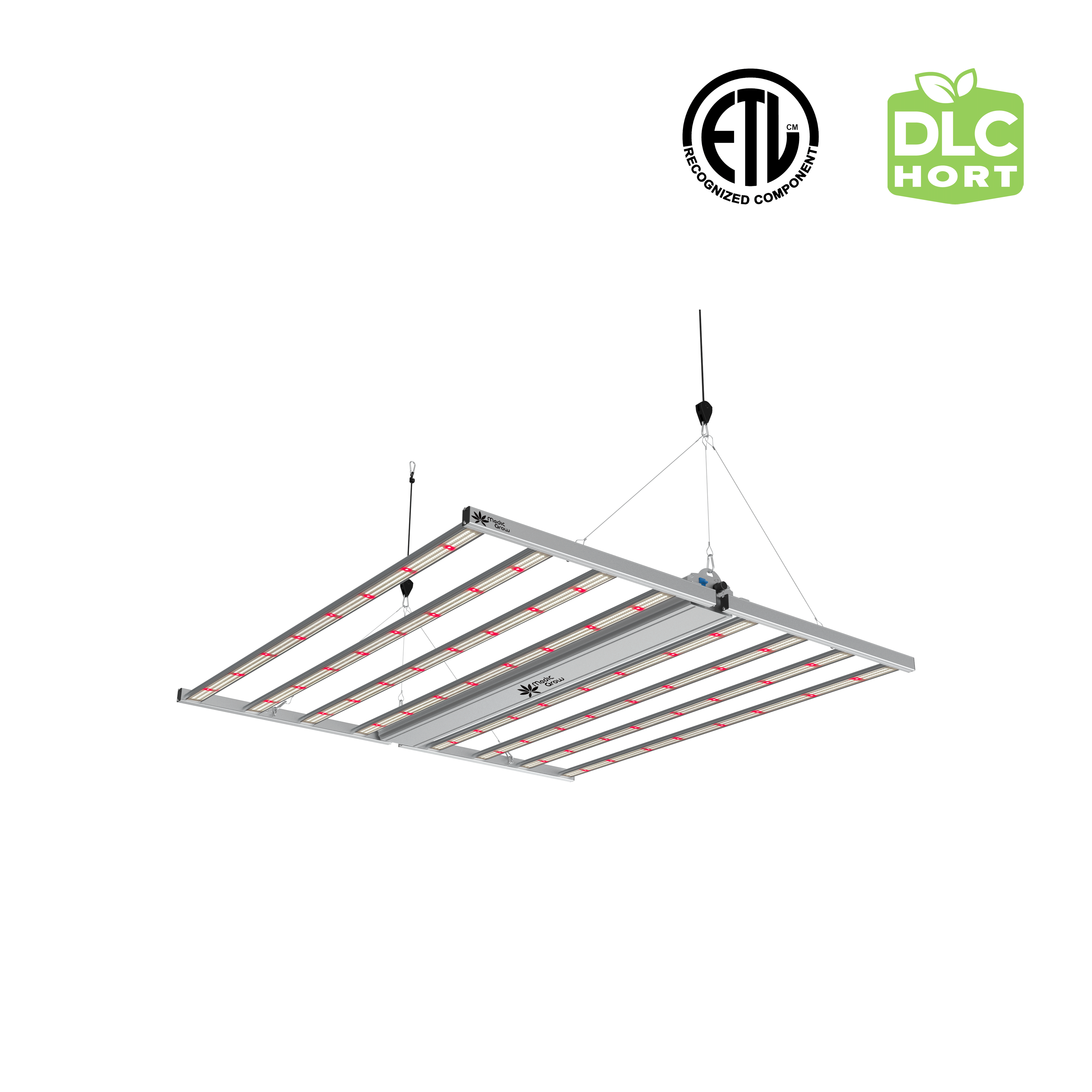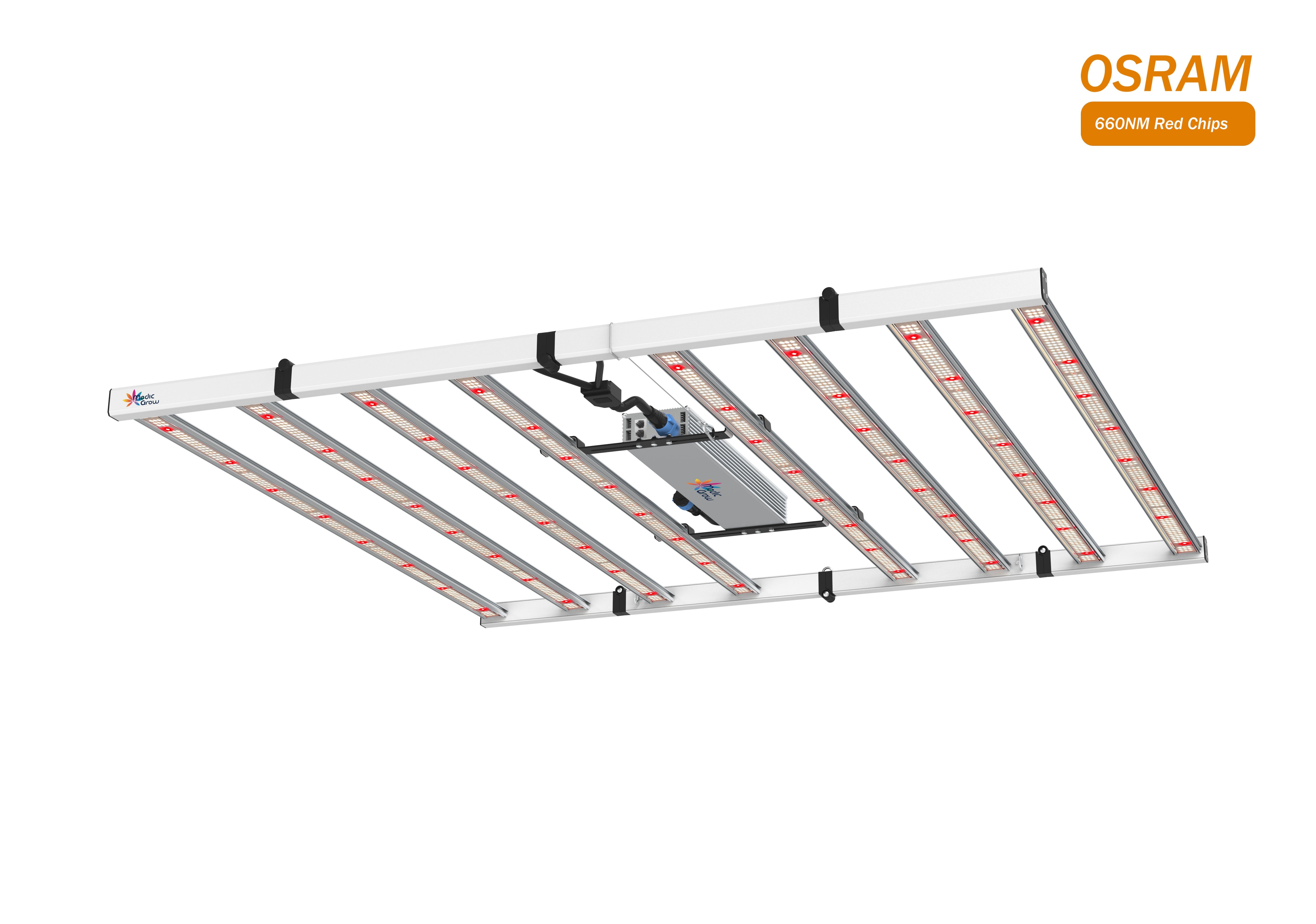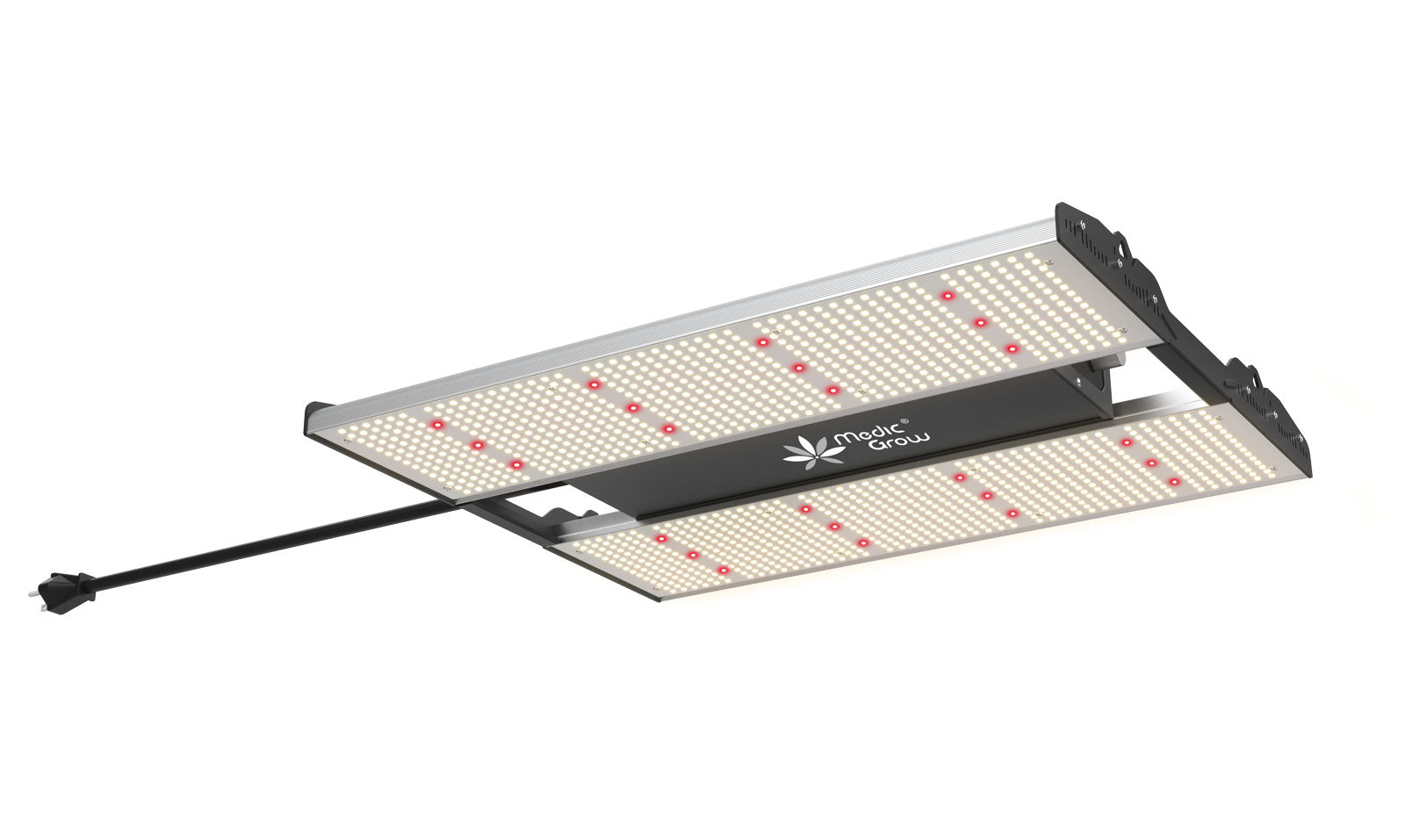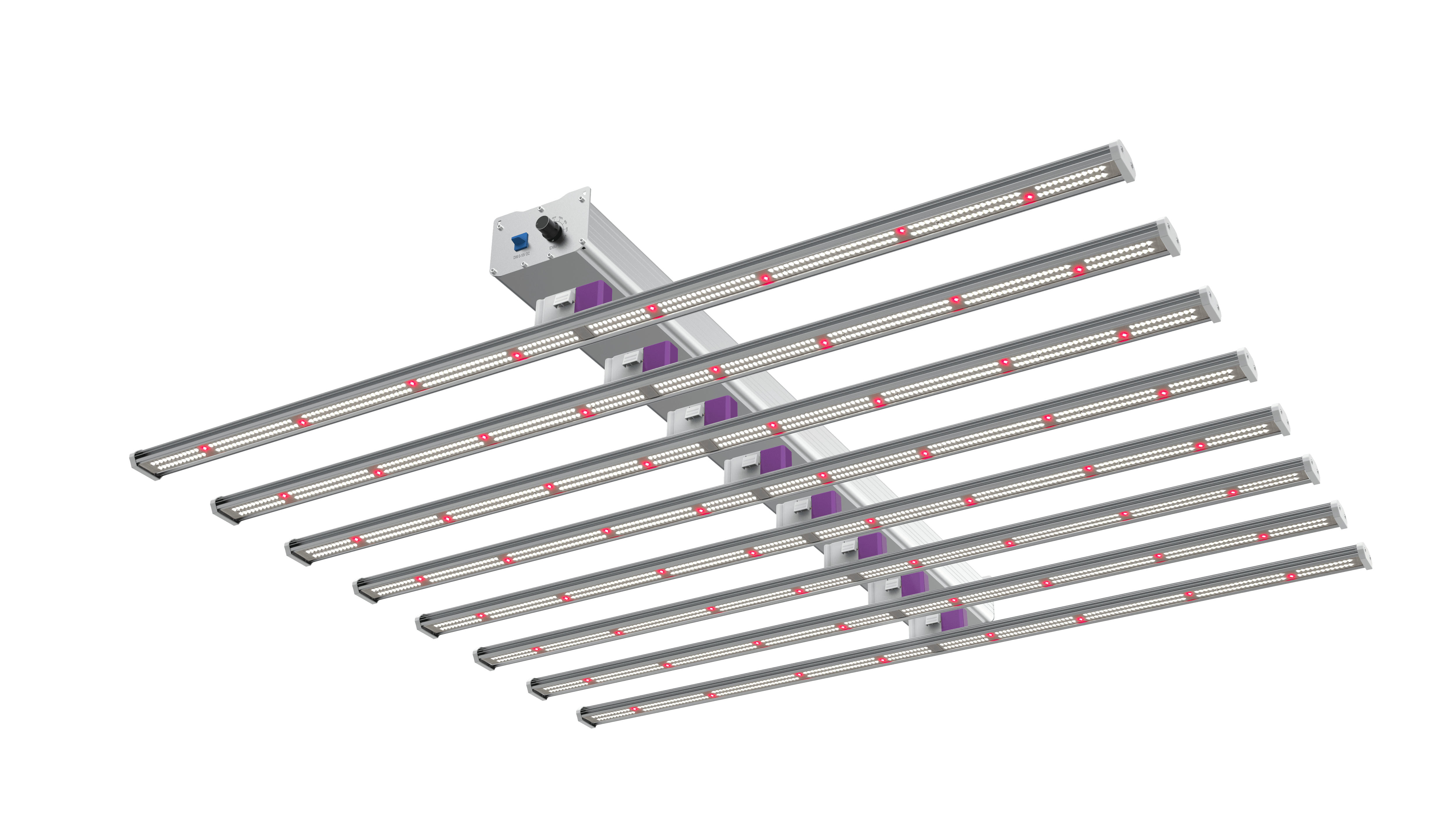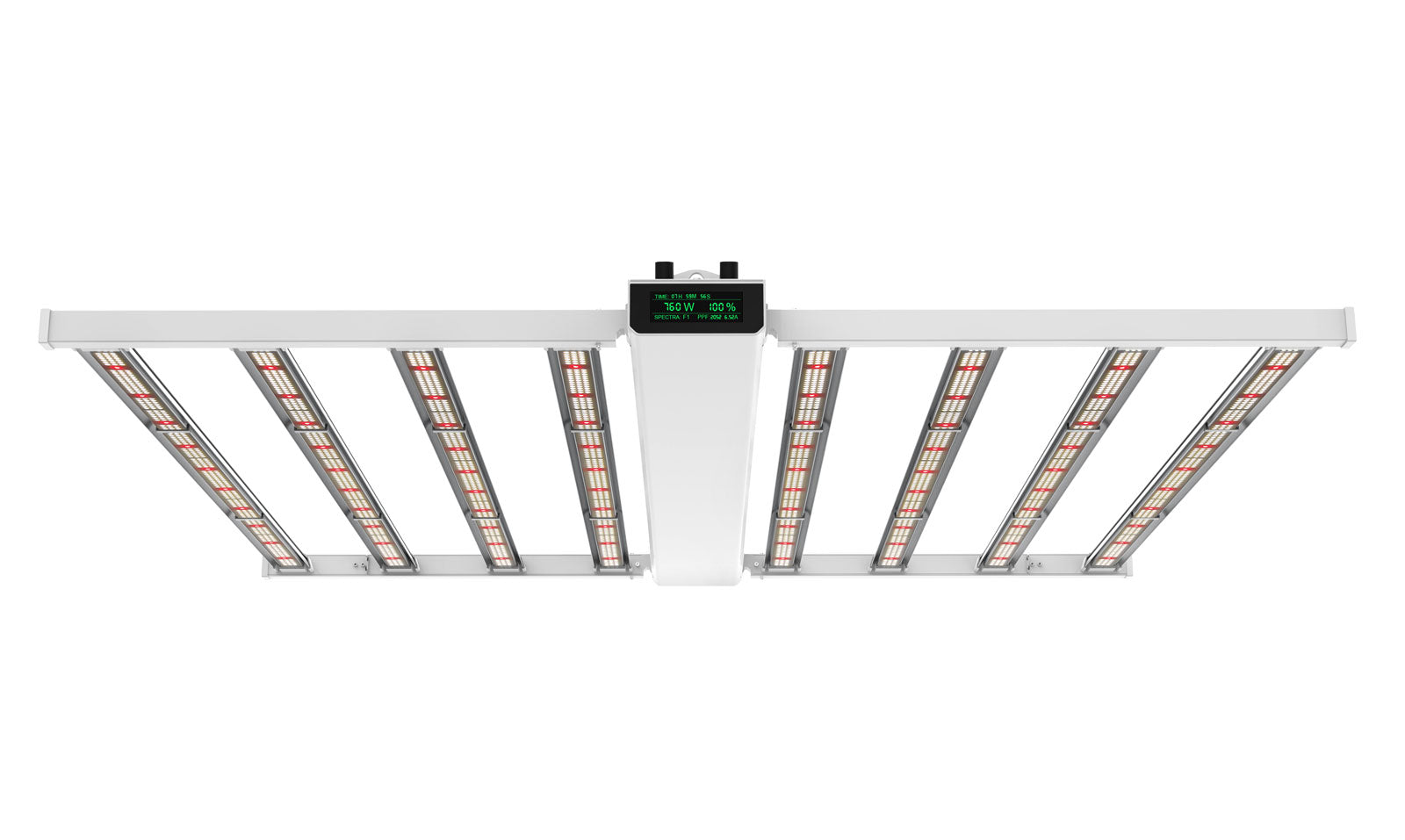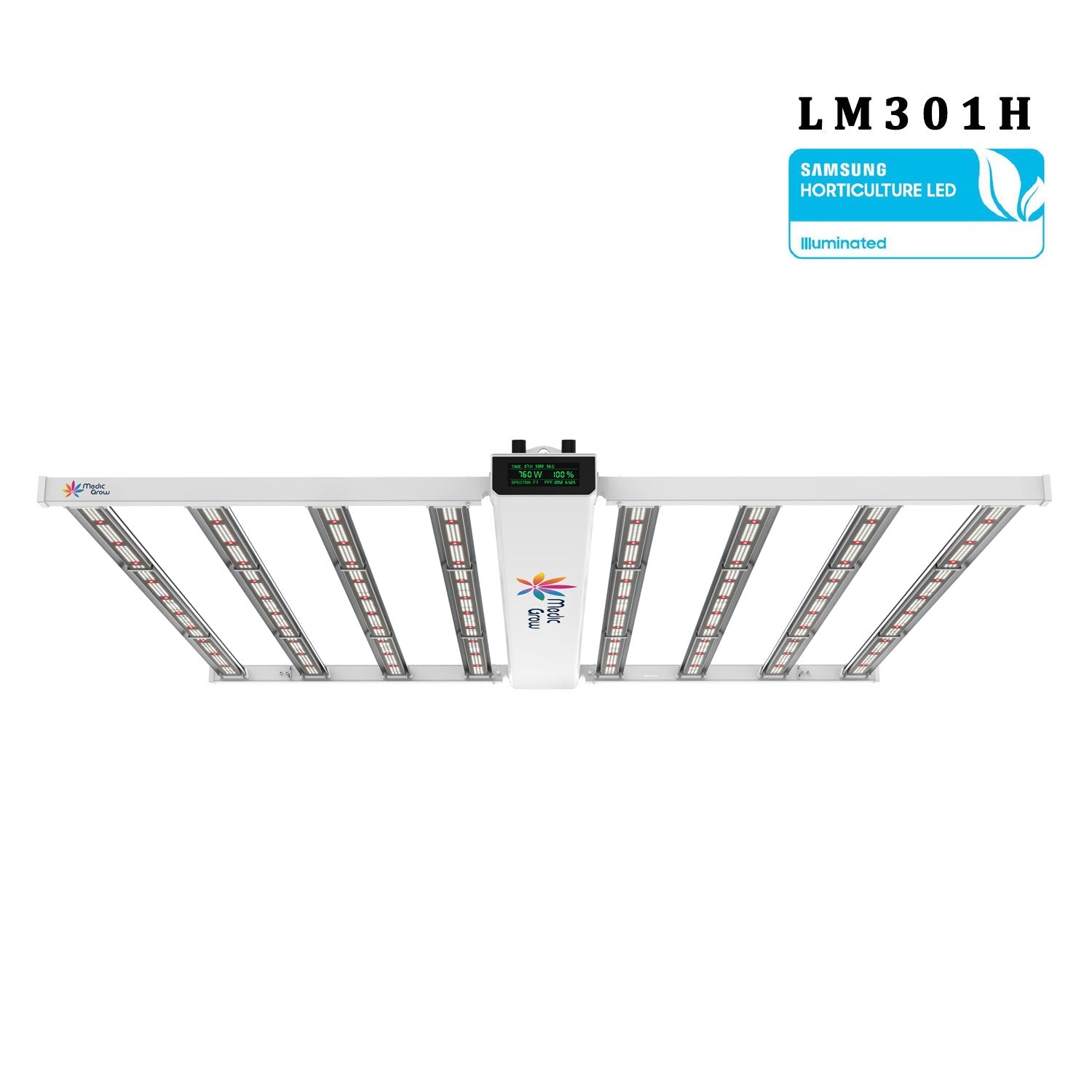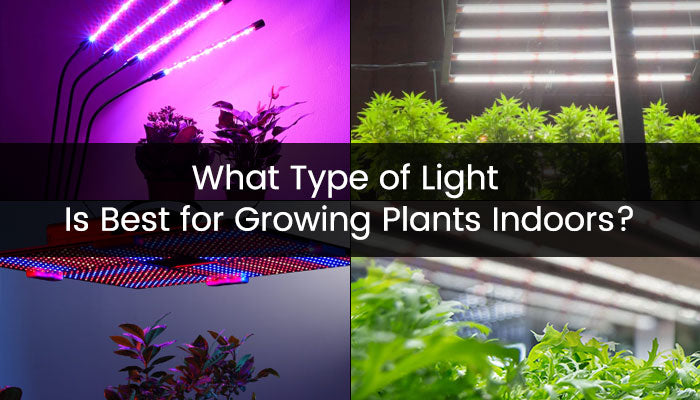
What Type of Light Is Best for Growing Plants Indoors?
For indoor plant growing, LED grow lights are often the most recommended choice because of their high energy efficiency, low heat generation, and long lifespan, and many LED lights like Medicgrow offer full-spectrum light for all stages of plant growth.
As outdoor weather extremes become more common and indoor gardening grows in popularity, people are noticing the importance of grow lights. Many wonder whether any LED light can be used as a grow light and how to use grow lights properly.
Different types of grow lights, including LED grow lights, incandescent bulbs, fluorescent bulbs, and HID lights, each have their advantages and disadvantages. In this post, we will explain why LED grow lights are the best option for growing plants indoors and guide how to use grow lights for optimal indoor plant growth.
Main Content:
- 1. Difference Between Grow Light vs Regular Light
- 2. What Color Grow Light Is Best for Indoor Plants?
- 3. What Type of Light Is Best for Growing Plants Indoors?
- 4. How to Use a Grow Light Properly?
- 5. Conclusion
- 6. FAQs About Grow Lights for Indoor Plants
Difference Between Grow Light vs Regular Light
When deciding on the most suitable lighting for indoor plant growth, it's common to wonder if any light can be used as a grow light. The options for lighting fixtures include grow lights and regular lights, and they differ significantly in terms of light intensity, spectrum, and effectiveness for plant growth. Here are 3 main differences between grow lights and regular lights.
Light Spectrum
Grow lights are Designed specifically to support plant growth, grow lights provide a spectrum of light that mimics natural sunlight, including the wavelengths needed for photosynthesis. They often feature full-spectrum light, which includes blue and red wavelengths designed for various growth stages. For instance, blue light promotes vegetative growth, while red light supports flowering and fruiting.
In contrast, incandescent or fluorescent bulbs are not optimized for plant growth. They usually emit a limited spectrum that lacks the specific wavelengths plants need for optimal photosynthesis. Regular lights often focus on general illumination rather than supporting plant health.
Intensity and Coverage
Grow lights typically offer higher light intensity and can be adjusted to provide the right amount of light for different stages of plant growth. They are designed to penetrate the plant canopy and cover a larger growing area.
On the other hand, regular lights, such as incandescent bulbs, fluorescent lights, and halogen lamps, generally provide lower light intensity and cover a smaller area, which is not suitable for growing plants. They may not deliver enough light or the right spectrum for plants to thrive.
Heat Output and Energy Efficiency
Modern grow lights, especially LEDs, are energy-efficient and produce less heat compared to traditional lighting options. This helps maintain optimal growing conditions and reduces the risk of heat stress on plants.
Conversely, traditional bulbs, such as incandescent bulbs, halogen lamps, and HID lights, can produce significant heat, which may not only be inefficient but could also stress plants or require additional cooling measures, resulting in higher electric bills.
Overall, grow lights are specifically engineered to meet the light needs of plants, whereas regular lights are intended for general illumination and do not provide the optimal conditions for plant growth.
However, the grow lights come in different colors. Which color of grow light is best for indoor plants? What type of light is best for growing plants indoors, and how should you use them properly? Let's delve into these questions.

What Color Grow Light Is Best for Indoor Plants?
The best color of grow light for indoor plants depends on the specific needs of the plants and the stage of growth they are in. Red and blue lights are particularly effective for indoor plant growth:
- Red Light: Red light is the important light color during the flowering and fruiting stages. It encourages blooming and fruit production by promoting the synthesis of carbohydrates and other plant growth processes.
- Blue Light: Blue light, in comparison, is essential during the vegetative stage. It helps plants develop strong stems and leaves by supporting chlorophyll production and promoting compact, healthy growth.
However, while red and blue lights are highly effective in promoting specific stages of growth, they lack the full range of wavelengths that plants might need for optimal health.
This is where full spectrum grow lights come in, as they provide a balanced combination of all necessary wavelengths, supporting plants throughout their entire growth cycle.
For plants requiring different light spectrums, I highly recommend Medicgrow's NEO-1000W grow light. Its spectrum is dimmable and designed for both plant vegetative and flowering stages.

What Type of Light Is Best for Growing Plants Indoors?
The best type of indoor lighting for growing plants varies depending on the specific plants being grown and their growth stages. Here’s a general guide to the best grow light options.
Full-spectrum LED Grow Lights
LED grow lights are the top choice for indoor gardening due to their energy efficiency, long lifespan, and customizable light spectrums. They provide full-spectrum light, which is essential for all stages of plant growth, from seedling to flowering.
Popular models like the Medic Grow MiniSun-2 150W grow lights are particularly known for their effectiveness in promoting healthy plant development. Additionally, LEDs generate less heat, minimizing the risk of burning plants and reducing the need for extra cooling.
Fluorescent Grow Lights (CFL and T5)
Fluorescent lights are cost-effective and run cool, making them ideal for small spaces and beginner growers. They work best for early-stage growth, such as seedlings and clones, and are suitable for low-light plants like herbs and leafy greens.
However, compared to full-spectrum LED grow lights, they offer a limited light spectrum and lower energy efficiency. In summary, while fluorescent lights are more affordable, LED grow lights are superior for plants with medium and high light requirements.
High-Intensity Discharge (HID) Lights
HID lights, including HPS (High-Pressure Sodium) and MH (Metal Halide) bulbs, are known for their high light output, making them suitable for larger grow spaces. These grow lights are particularly effective during the flowering stage of plant growth.
But in comparison to LEDs, traditional grow lights generate more heat, consume more energy, and have a shorter lifespan. Therefore, I prefer full-spectrum LED grow lights as they can support all stages of plant growth and consume less energy.
Compact Fluorescent Lamps (CFLs)
CFLs are compact, budget-friendly, and easy to use, making them an excellent choice for small-scale indoor gardens and personal indoor growth. CFLs also provide a good light spectrum for small plants, herbs, and seedlings, and can be used as supplemental lighting.
Compared with LED grow lights, CFLs lack the customizable spectrum and high energy efficiency of LED grow lights. If you're cultivating high-light-demanding plants such as tomatoes, orchids, roses, etc., I highly recommend using full-spectrum LED lights like Medicgrow Fold-800W grow lights, especially for large-scale indoor cultivation.
These grow lights have a high light intensity of up to 1346 μmol/m2/s PPFD/PAR values and a light spectrum specially designed for growing plants with high light requirements, maximizing your plants' yields and potency.
To sum up, choosing the best grow lights depends on your specific needs, the types of plants you're growing, and your budget. LED grow lights stand out for their versatility and efficiency, making them the top pick for many indoor growers. Here are my recommendations for the 2024 best LED grow lights:
- Medicgrow NEO Series (Best Yields)
- Mars Hydro FC Series (Best Budget)
- Spider Farmer SE (Most Energy Savings)
- HLG 750 Diablo (Highest Efficacy)
- Medicgrow Fold-800 (Best Cost-Effective LEDs)

How to Use a Grow Light Properly?
In addition to choosing the best grow lights for indoor plants, using a grow light effectively can help you maximize yields for indoor plant growth. Here’s how to optimize its use for the best results.
Optimize Light Duration
The appropriate duration of light exposure is crucial for different stages of plant growth. For plants in the vegetative stage, provide 16-18 hours of light per day. This promotes strong leaf and stem development.
When your plants enter the flowering stage, reduce the light exposure to 12 hours per day. This change mimics the natural shortening of daylight and encourages flowering. Seedlings and young plants may benefit from 18-24 hours of light per day to jumpstart growth.
Grow Light Hanging Distance
The distance between the grow light and your plants directly impacts plant health. LED lights should generally be hung 18-24 inches above the canopy during the vegetative stage, and 12-18 inches during flowering. Fluorescent lights (CFL and T5) can be placed closer, around 4-6 inches away, due to their lower heat output.
HID lights (HPS and MH) should be kept at least 24-36 inches away because they produce more heat and have a higher intensity. Adjust the light height as your plants grow and check for the grow light distance chart LED to avoid light burn or inadequate light exposure.
Manage Heat and Ventilation
Heat management can prevent stress on plants and promote growth, especially when using powerful lights like HID or even high-output LEDs. Excessive heat can stress your plants, so ensure your grow area has adequate ventilation. Use grow tent kits to circulate air and prevent hotspots. Monitor the temperature in your grow space and aim to keep it within the optimal range for your plants (usually between 70-85°F).
Additionally, managing humidity is important, as LED grow lights can reduce humidity levels. Keep an eye on the humidity and adjust as necessary, especially during the flowering stage when plants prefer slightly lower humidity.
Supplemental Lighting (UV Light)
Supplemental lighting, such as UV light for plants, can enhance plant growth, especially during the flowering stage. Plants' UV light can stimulate resin production in plants, leading to higher potency and better flavor.
Adding UV-A and UV-B light for plants a few hours each day during the late vegetative and flowering stages can improve plant quality. However, be cautious with UV exposure, as too much can damage plants. Start with short exposure times and monitor how your plants react.
By adjusting these factors with the best grow lights based on your plants' growth stages and environmental needs, you can create an ideal indoor growing environment, ensuring your plants thrive and produce the best buds.
Conclusion
In summary, choosing the best grow lights helps for successful indoor gardening. LED grow lights are the best type of lights for growing plants indoors because of their energy efficiency, full-spectrum light, and long lifespan. To optimize plant health and yield, it's recommended to manage light spectrum, intensity, and heat. I hope you find the best grow lights for your indoor plants and enjoy a joyful planting.
Related post:
Are LED Grow Lights Harmful to Humans?
FAQs About Grow Lights for Indoor Plants
1. What Type of Light Is Best for Growing Plants Indoors?
The best type of light for growing plants indoors is full-spectrum LED grow lights. These lights closely mimic natural sunlight by providing the complete range of wavelengths needed for all stages of plant growth, from seedling to flowering.
Besides, full-spectrum LEDs are energy-efficient, produce minimal heat, and offer customizable light settings, making them ideal for creating optimal growing conditions for a wide variety of indoor plants.
2. What Is the Difference Between Light and Grow Light?
Regular lights, such as incandescent, fluorescent, or standard LEDs, are designed for general illumination and often lack the specific wavelengths and intensity to support plant growth.
In contrast, grow lights are specifically engineered to mimic natural sunlight and provide the full spectrum of light necessary for photosynthesis and healthy plant development.
3. What Is the Best LED Light to Grow With?
The best LED light to grow with is typically a full-spectrum LED grow light specially designed to meet the needs of all growth stages. Some top-rated LED grow lights include the Medic Grow NEO Series and the Mars Hydro FC Series.
These models are known for their high energy efficiency, customizable light settings, and balanced light output, making them ideal for both beginners and experienced indoor growers.
4. Do Grow Lights Actually Help Plants?
Yes, grow lights do help plants, especially in indoor or low-light environments. They provide the specific light spectrum that plants need for photosynthesis, promoting healthy growth, strong roots, and vibrant flowering.
Additionally, grow lights can mimic natural sunlight, ensuring that plants receive adequate light intensity and duration, which are crucial for their development. This makes grow lights essential for indoor gardening, where natural sunlight is insufficient or unavailable.
Featured Products
Blog Posts
Contact Us with Any Idea!
- Choosing a selection results in a full page refresh.
!

